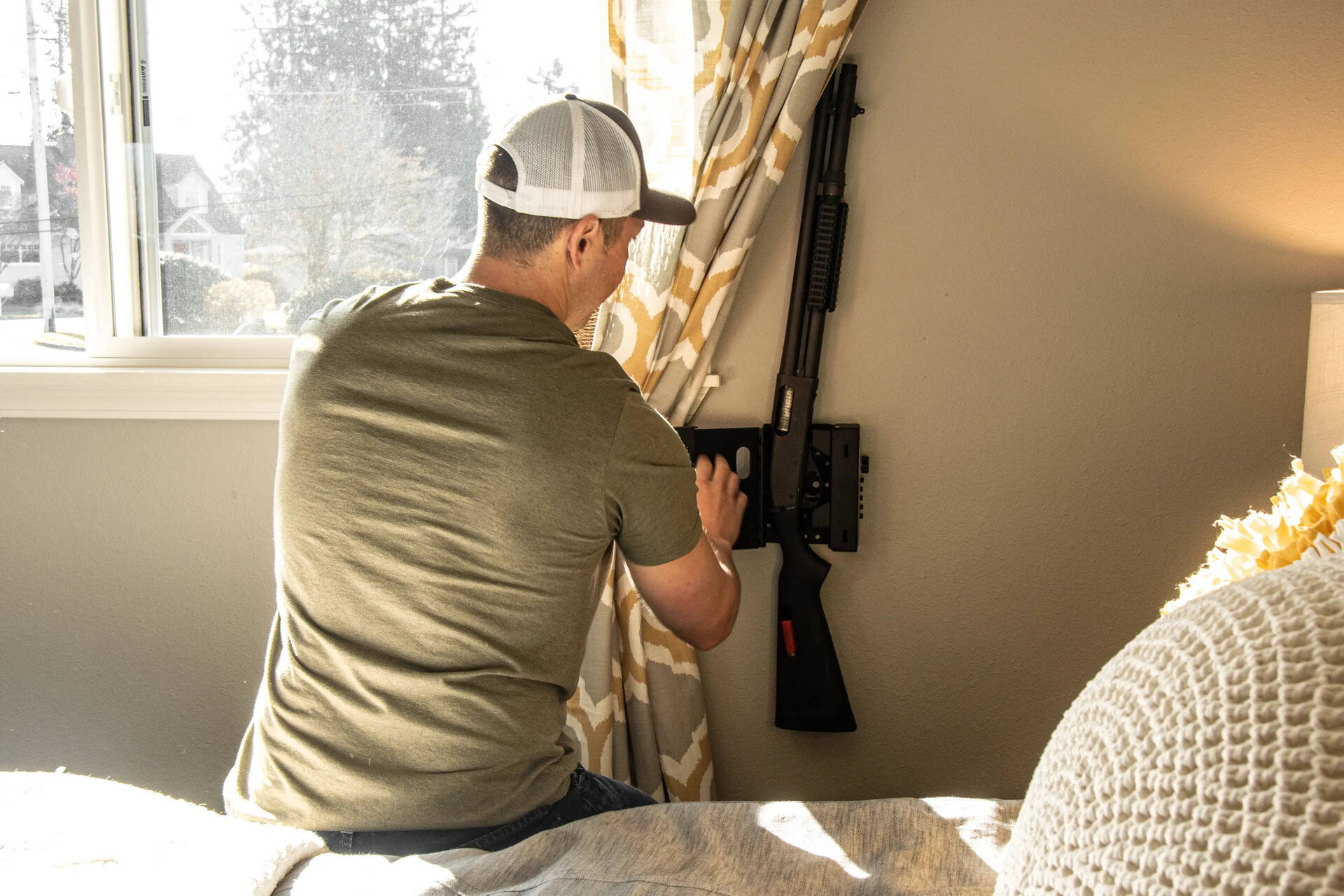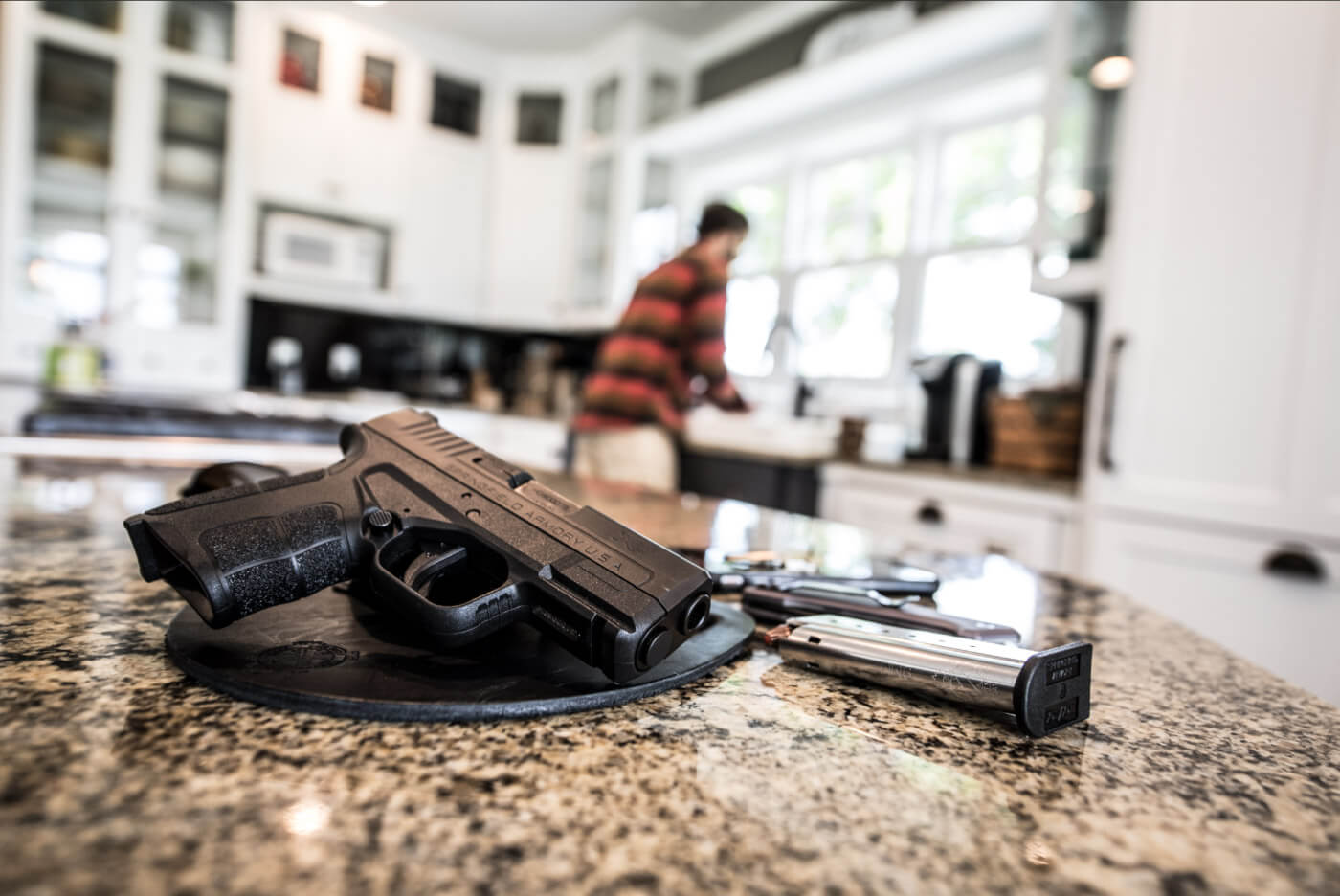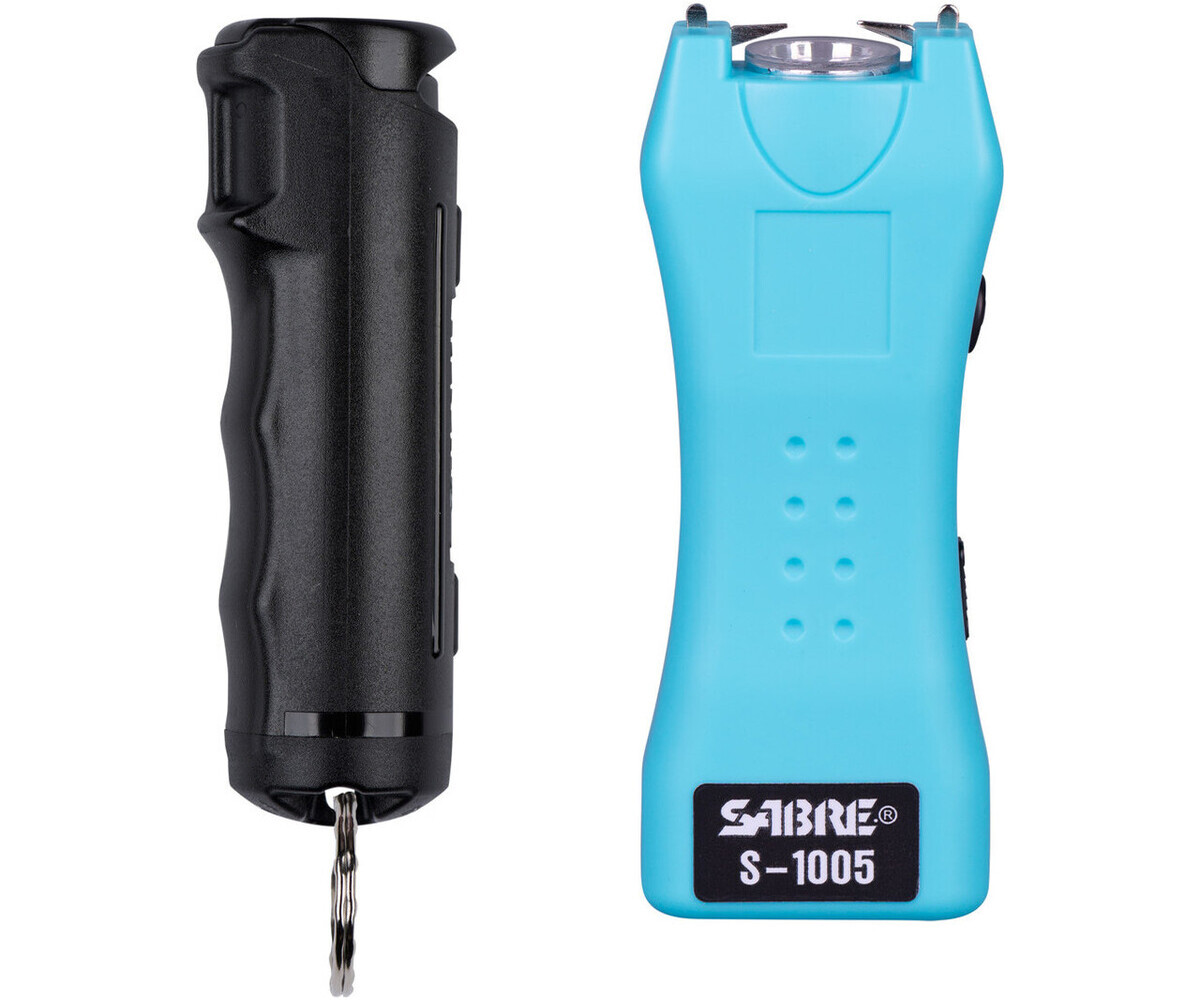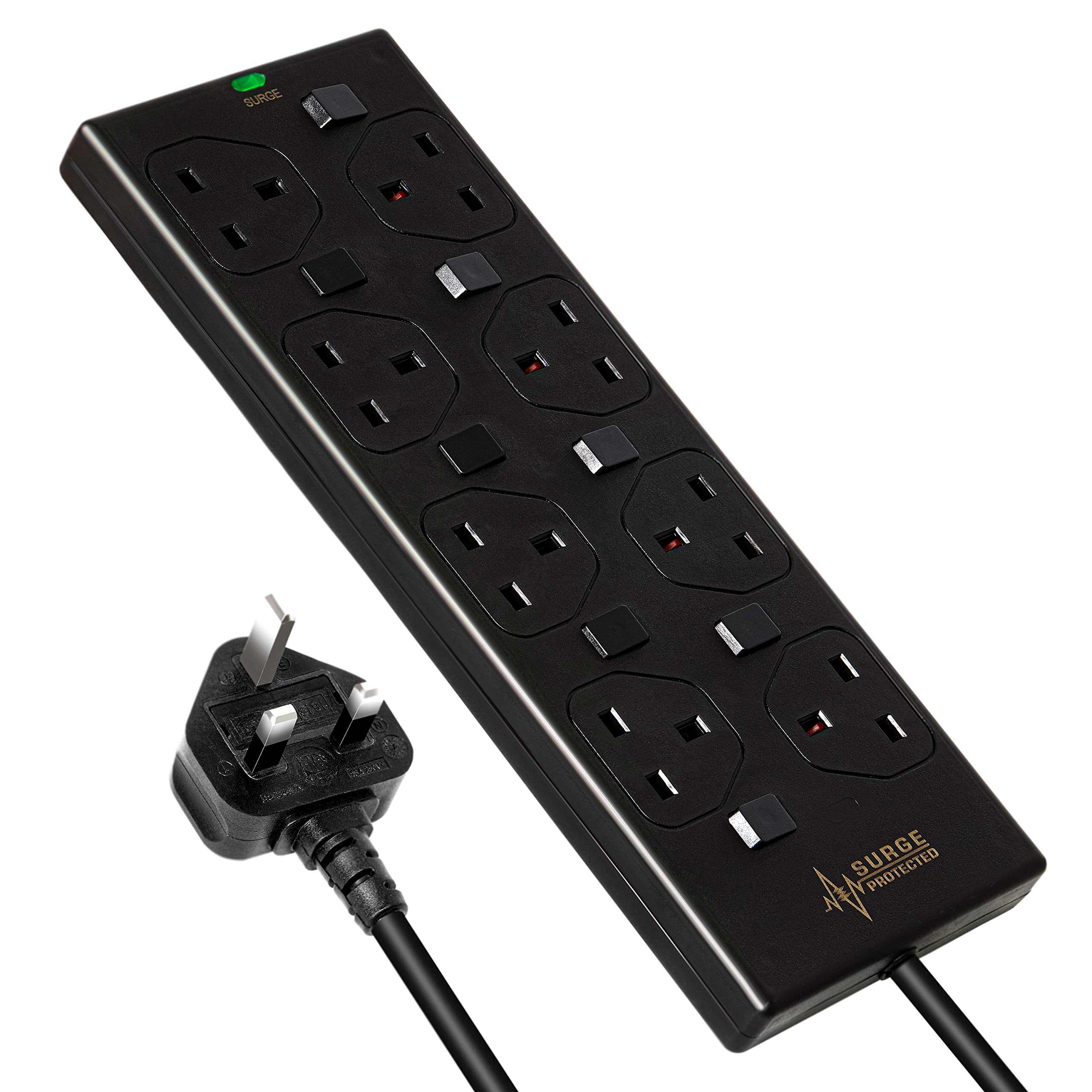Home>Home Security and Surveillance>What Should I Know About Tasers And Stun Guns For Home Protection?
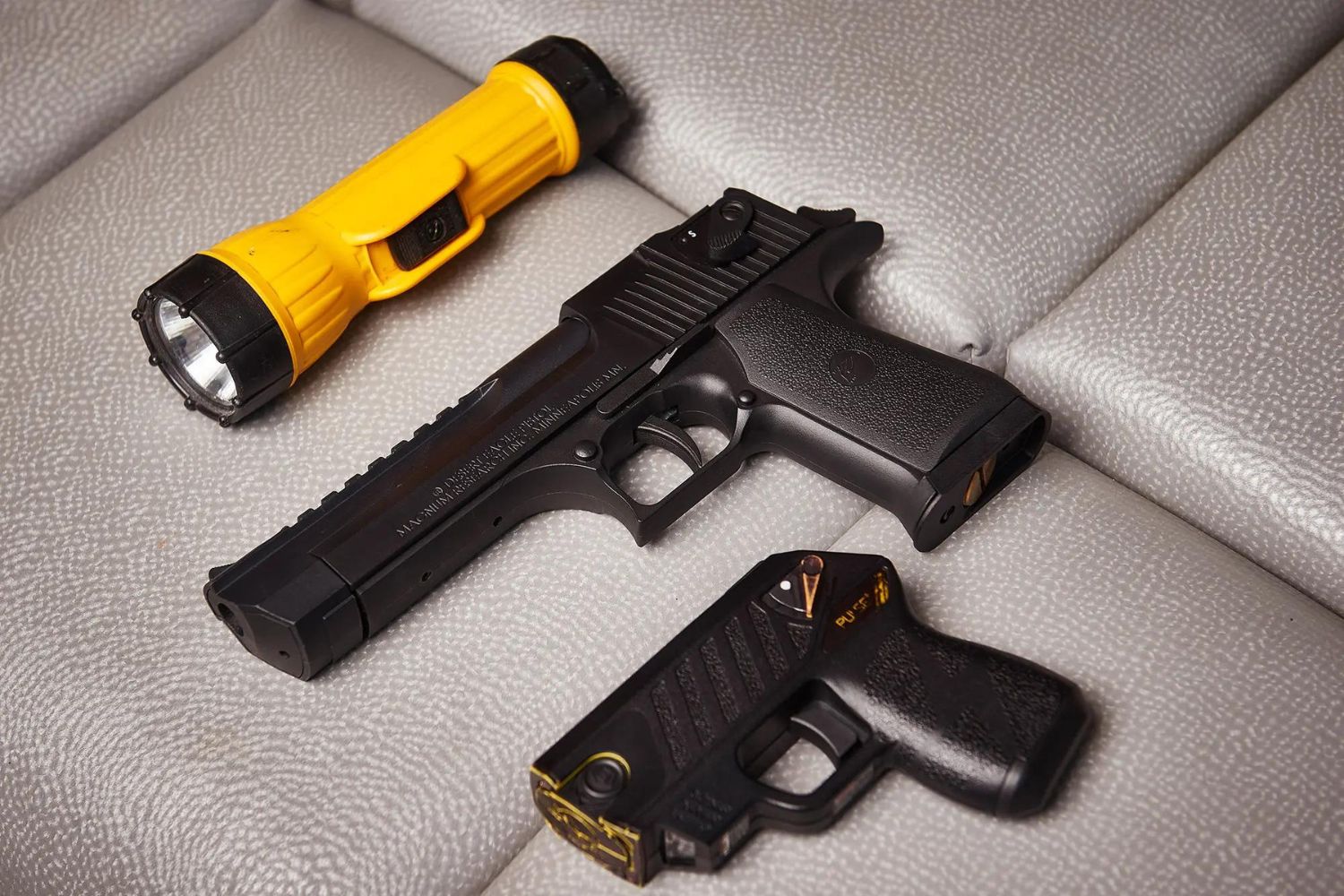

Home Security and Surveillance
What Should I Know About Tasers And Stun Guns For Home Protection?
Modified: March 6, 2024
Protect your home with tasers and stun guns. Learn the essentials of using these powerful tools for home security and surveillance.
(Many of the links in this article redirect to a specific reviewed product. Your purchase of these products through affiliate links helps to generate commission for Storables.com, at no extra cost. Learn more)
Introduction
Welcome to the world of home security and surveillance, where technology meets peace of mind. In today’s fast-paced society, it’s crucial to ensure the safety of our homes and loved ones. With the advancements in home security systems, one tool that has gained popularity is the Taser and stun guns. These devices offer an additional layer of protection by providing a non-lethal option for self-defense.
In this article, we will explore the world of Tasers and stun guns, their functionality, effectiveness, legal considerations, and safety precautions. By understanding these aspects, you will be able to make an informed decision about utilizing these devices for your home protection needs.
So, let’s dive into the realm of Tasers and stun guns and discover how they can contribute to enhancing the security of your home.
Key Takeaways:
- Tasers and stun guns offer non-lethal protection for homes, providing a temporary advantage in dangerous situations. Proper training, legal awareness, and responsible use are crucial for effective home security.
- Understanding the differences between Tasers and stun guns, along with their limitations, can help homeowners make informed decisions about their home protection needs. Safety, training, and legal compliance are key for effective use.
What is a Taser?
A Taser is a device that uses electrical current to disrupt the body’s muscular control, temporarily incapacitating an individual. It is a non-lethal alternative to firearms and is commonly used by law enforcement agencies around the world.
The word “Taser” is actually an acronym for “Thomas A. Swift’s Electric Rifle,” named after the fictional character created by science fiction author Victor Appleton. However, in reality, Tasers are handheld devices that resemble firearms.
A Taser functions by shooting two small dart-like electrodes, connected to the device by metal wires, towards the target. These electrodes penetrate the skin and deliver an electric shock, momentarily overriding the nervous system and causing the muscles to contract involuntarily, rendering the person unable to move temporarily.
It’s important to note that unlike stun guns, which require direct contact with the target’s body, Tasers can be deployed from a distance, typically up to 15 feet away from the target. This range gives the user an added advantage in situations where physical proximity to a threat may be dangerous.
Tasers are designed to be effective even through thick clothing, making them a versatile tool for self-defense in various scenarios. They provide an opportunity to immobilize an attacker and create a window of time for escape or for law enforcement intervention.
Next, let’s explore the working mechanism of a Taser in more detail to better understand how it functions.
How does a Taser work?
A Taser works by utilizing principles of electromagnetism and muscle physiology. The device delivers electrical pulses that interfere with the normal communication between the brain and the muscles, resulting in a temporary loss of control over muscular movement.
When a Taser is fired, two small dart-like electrodes are propelled towards the target using compressed gas or a small explosive charge. These electrodes are connected to the Taser by conductive wires that deliver electrical current.
Upon contact with the target’s body, the electrodes penetrate the skin and attach themselves to the clothing or skin surface. Once attached, the Taser sends a series of electrical pulses through the wires and electrodes. These pulses have a high voltage but low current, meaning that they deliver a strong electric shock but with minimal risk of causing long-term damage.
The electrical current emitted by the Taser disrupts the normal functioning of the body’s nervous system. The pulses interfere with the signals sent between the brain and the muscles, causing involuntary muscle contractions. This results in a temporary paralysis or loss of control over one’s motor functions.
It’s important to note that a Taser interacts primarily with the body’s muscles and nerves, rather than the cardiovascular system. This means that a Taser’s electric shock is unlikely to cause significant harm to the heart or other vital organs, making it a relatively safe option when used correctly.
The effects of a Taser typically last for a short duration, usually around five seconds. After this period, the muscles and nerves gradually regain their normal function, allowing the individual to recover from the temporary incapacitation.
Now that we have delved into the workings of a Taser, let’s explore the concept of a stun gun and how it differs from a Taser.
What is a stun gun?
A stun gun is another type of non-lethal self-defense device that uses electrical shock to incapacitate an individual. Unlike Tasers, stun guns do not require projectiles to make contact with the target. Instead, they are designed to be held against the target’s body, delivering an electric shock upon contact.
Stun guns are typically handheld devices that are compact and easy to carry. They come in various shapes and sizes, resembling objects like flashlights or cell phones, to provide an element of surprise and discretion. This makes them a popular choice for personal protection.
The electrical shock delivered by a stun gun is achieved through two or more metal probes located at the end of the device. When the stun gun makes contact with the target’s body, a high-voltage, low-amperage current is discharged between the metal probes. This current creates a temporary disruption in the target’s muscular control, causing pain, disorientation, and muscle contractions.
It’s important to note that stun guns rely on the principle of pain compliance. The electric shock delivered by the device causes significant pain and discomfort, which can discourage an attacker or buy valuable time for the intended victim to escape.
Unlike Tasers, stun guns have a relatively short range and need to be in direct contact with the target to be effective. This means that using a stun gun requires close proximity to the attacker, which may not always be ideal or safe.
Stun guns are known for their simplicity and ease of use. They are designed to be intuitive and typically feature a simple activation button or switch for quick deployment. This makes them accessible to a wide range of users, providing a readily available option for personal protection.
Now that we have explored the concept of a stun gun, let’s compare the differences between Tasers and stun guns to determine their respective advantages and disadvantages.
How does a stun gun work?
A stun gun is a self-defense device that works by delivering a high-voltage, low-amperage electrical shock to incapacitate an attacker temporarily. It operates on the principle of disrupting the body’s nervous system and muscle control.
When a stun gun is activated, it generates a powerful electrical charge that is delivered through two or more metal probes located at the end of the device. These probes are designed to make direct contact with the target’s body, typically the skin or clothing.
Upon contact, the stun gun emits an intense electrical current between the probes, which creates a circuit through the body of the attacker. This current goes through the muscles and nerves, causing them to spasm rapidly. The result is a loss of control over muscular movement, intense pain, and temporary incapacitation.
The electrical shock delivered by a stun gun primarily affects the sensory nerves and the muscles of the attacker. The intense pain and muscle contractions can cause disorientation, confusion, and the inability to continue aggressive behavior. This provides an opportunity for the victim to escape or seek help.
Stun guns typically operate on batteries, which provide the necessary electrical energy to deliver the shock. The power output of a stun gun can vary depending on the model and manufacturer, but it is designed to be effective enough to immobilize an attacker without causing permanent harm or injury.
It’s important to note that stun guns are designed to be non-lethal self-defense tools. The electrical shock they deliver does not significantly affect the cardiovascular system or pose a fatal risk to the person being shocked, assuming the device is used responsibly and according to the manufacturer’s instructions.
One of the benefits of stun guns is their ease of use. They often feature a simple activation button or switch, allowing for quick deployment in a potentially dangerous situation. However, it’s essential to remember that proper training and understanding of how to use a stun gun effectively is crucial to maximize its potential as a self-defense tool.
Now that we have explored how stun guns work, let’s move on to comparing Tasers and stun guns to better understand their differences and determine which option may be more suitable for your home protection needs.
Comparison between Tasers and Stun Guns
While both Tasers and stun guns serve the purpose of non-lethal self-defense, there are notable differences between the two devices. Understanding these distinctions can help you make an informed decision about which option is more suitable for your home protection needs.
Range: One significant difference between Tasers and stun guns lies in their effective range. Tasers have a longer range and can be deployed from a distance of up to 15 feet by shooting electrodes connected to the device. In contrast, stun guns require direct contact with the target’s body to deliver an electric shock.
Method of Deployment: Tasers are discharged by firing dart-like electrodes connected by wires, which penetrate the skin and deliver the electric shock. Stun guns, on the other hand, require physical contact with the target, as the electric shock is delivered through metal probes located at the end of the device.
Training Required: Proper training and education are essential for both Tasers and stun guns. However, Tasers often require more extensive training due to their longer range and the need to accurately aim and fire the electrodes. Stun guns, on the other hand, are relatively straightforward to use, but training is still recommended to ensure effective deployment and minimize the risk of accidental misuse.
Power Output: Tasers typically deliver a higher voltage and more powerful electric shock compared to stun guns. This higher power output allows Tasers to override an attacker’s muscular control more effectively, leading to a greater chance of incapacitation. Stun guns, while still capable of delivering a significant shock, may not have the same level of power as Tasers.
Legal Considerations: The legality of owning and using Tasers and stun guns can vary by location. Some jurisdictions may have stricter regulations or require permits for the possession or use of these devices. It is crucial to familiarize yourself with the local laws and regulations to ensure compliance.
Personal Comfort: The choice between a Taser and a stun gun can also come down to personal preference and comfort. Some individuals may feel more at ease with the additional range and projectile nature of Tasers, while others may prefer the simplicity and direct contact aspect of stun guns.
Ultimately, the decision between a Taser and a stun gun will depend on various factors, including your personal comfort level, training availability, legal considerations, and your specific home protection needs. It is recommended to research and evaluate both options thoroughly before making a decision.
Now that we have discussed the differences between Tasers and stun guns, let’s delve into the legal considerations of owning and using these devices for home protection purposes.
When considering a taser or stun gun for home protection, be sure to check your local laws and regulations regarding their use and ownership. It’s important to understand the legal implications before making a purchase.
Legal Considerations for Owning and Using Tasers or Stun Guns
When it comes to owning and using Tasers or stun guns for home protection, it is essential to understand the legal considerations and regulations surrounding these devices. Laws regarding the possession and use of Tasers and stun guns can vary widely depending on your jurisdiction. It is crucial to research and abide by the laws specific to your location to ensure compliance and avoid legal consequences.
Here are some key legal considerations to keep in mind:
1. Legal Status: Start by determining whether it is legal to own Tasers or stun guns in your area. Some countries, states, or cities may have outright bans on these devices, while others may have restrictions regarding possession, use, or purchase age requirements. It is important to familiarize yourself with the specific laws pertaining to your location.
2. Age Restrictions: Many jurisdictions impose age restrictions on the ownership and use of Tasers and stun guns. Check the minimum age requirement set by the law and ensure compliance. Selling or providing these devices to individuals below the legal age limit can lead to serious legal consequences.
3. Permits and Licenses: Certain areas may require permits, licenses, or certifications to legally possess or carry Tasers or stun guns. Understanding the requirements and obtaining the necessary paperwork is crucial to ensure compliance with the law. Failure to acquire the required permits or licenses can result in criminal charges.
4. Restricted Areas: Some locations may have designated areas where Tasers or stun guns are prohibited. These can include government buildings, schools, airports, or other sensitive locations. It is important to be aware of these restricted areas and avoid carrying or using the devices in these locations to avoid legal trouble.
5. Self-Defense Use: The laws surrounding the use of Tasers and stun guns for self-defense can vary. In some jurisdictions, these devices are considered reasonable force for self-defense purposes, while in others, the use of any weapon, including non-lethal devices, may be subject to stricter scrutiny. It is crucial to understand the self-defense laws in your area and act within legal boundaries.
6. Misuse and Prohibited Actions: Using Tasers or stun guns in an unlawful or reckless manner can result in serious legal consequences. It is important to use these devices responsibly and within the bounds of the law. Misuse, such as using them to commit a crime or intentionally causing harm without legitimate self-defense reasons, can lead to criminal charges.
7. Training and Education: Many jurisdictions emphasize the importance of proper training and education for individuals who own or use Tasers or stun guns. Completing training courses or obtaining certifications can demonstrate responsible ownership and may be required by law in some areas.
Remember, laws regarding Tasers and stun guns can change over time, so it is crucial to stay updated with any regulatory updates or changes in your jurisdiction. Consulting a legal professional or law enforcement agency knowledgeable about the specific laws in your area can provide you with accurate and up-to-date information.
Now that we have discussed the legal considerations, let’s explore the effectiveness of Tasers and stun guns for home protection.
Effectiveness of Tasers and Stun Guns for Home Protection
Tasers and stun guns are popular choices for enhancing home protection due to their non-lethal nature and ability to incapacitate an attacker temporarily. However, it is important to understand the effectiveness of these devices and their limitations in providing home security.
Both Tasers and stun guns can be effective tools for self-defense in certain situations:
1. Deterrence: The presence of a Taser or stun gun alone can serve as a deterrent to potential attackers. Knowing that you have a means of self-defense can discourage criminals from targeting your home, as they may fear the consequences of being incapacitated.
2. Non-Lethal Option: Tasers and stun guns offer a non-lethal alternative to firearms. They provide an opportunity to immobilize an attacker without causing significant harm or risk of fatality. This is particularly important if you are concerned about using lethal force or if you live in an area with strict gun control laws.
3. Accessibility: Tasers and stun guns are relatively easy to use and require minimal training compared to other self-defense tools. They often feature simple activation buttons or switches, making them accessible to individuals of various physical abilities and experience levels.
4. Disruption of the Nervous System: Both Tasers and stun guns disrupt the body’s nervous system, causing temporary paralysis and loss of muscular control. This can provide valuable seconds to escape or call for help in a home invasion scenario.
However, it is important to recognize the limitations and considerations when relying on Tasers or stun guns for home protection:
1. Limited Range: Stun guns require direct contact with the attacker’s body, while Tasers have a limited range of around 15 feet. This means that you must be in close proximity to the threat for the devices to be effective. In a home invasion situation, this may not always be feasible or safe.
2. Multiple Attackers: Tasers and stun guns are designed for use against single attackers. If you are facing multiple assailants, these devices may not provide effective defense against all of them simultaneously.
3. Effectiveness on Intoxicated or Determined Attackers: The effectiveness of Tasers and stun guns can vary depending on the individual being targeted. Intoxicated or highly determined attackers may be less affected by the electrical shock, reducing the device’s effectiveness in incapacitating them.
4. Reliance on Batteries: Both Tasers and stun guns rely on battery-powered operation. It is crucial to ensure that the device is adequately charged and in good working condition to ensure optimal effectiveness when needed.
It’s important to remember that no self-defense tool can guarantee complete safety. Tasers and stun guns should be seen as one element of a comprehensive home protection strategy, which may also include other security measures such as alarms, surveillance systems, and proper home security practices.
Before relying on Tasers or stun guns for home protection, it is crucial to familiarize yourself with your local laws and regulations, receive proper training and education, and consider the specific risks and dynamics of your home environment.
Now, let’s delve into the safety precautions that should be followed when using Tasers or stun guns for home protection.
Safety Precautions When Using Tasers or Stun Guns
While Tasers and stun guns can be effective tools for self-defense and home protection, it is crucial to prioritize safety when handling and using these devices. Proper usage and adherence to safety precautions are essential to avoid accidents, minimize risks, and ensure the devices are used responsibly. Here are some important safety precautions to keep in mind:
1. Familiarize Yourself with the User Manual: Before using a Taser or stun gun, carefully read and understand the user manual provided by the manufacturer. Follow any specific guidelines, instructions, or recommended best practices outlined in the manual to ensure safe operation.
2. Training and Education: Seek proper training and education on the use of these devices. Training programs, self-defense classes, or courses offered by law enforcement agencies can provide valuable insights into safe handling techniques, deploying the devices effectively, and understanding the potential risks.
3. Know the Legal Regulations: Familiarize yourself with the legal regulations surrounding Tasers and stun guns in your area. Understanding restrictions, permits, and any specific laws related to their use can help you stay compliant and avoid legal issues.
4. Handle with Care: Treat Tasers and stun guns as you would any other potentially dangerous device. Keep them out of the reach of children and unauthorized individuals. Store them in secure locations when not in use to prevent accidental or unauthorized access.
5. Inspect Devices Regularly: Regularly inspect your Taser or stun gun for any signs of damage, wear, or malfunction. Check the condition of the electrodes, wires, and battery to ensure they are in good working order. If you notice any issues, have the device examined by a professional or contact the manufacturer for guidance.
6. Choose a Safe Environment: When practicing or deploying a Taser or stun gun, choose a safe environment free from obstacles or potential hazards. Make sure there is ample space around you and avoid using the devices in wet or damp conditions to reduce the risk of electrical shock.
7. Aim with Caution: When using a Taser, take extra care to aim for the appropriate target area, such as the lower torso or upper thigh. Avoid targeting sensitive areas like the head, neck, or groin. Proper aim can increase the effectiveness while minimizing the risk of causing unintended harm.
8. Consider Backup Options: Tasers and stun guns should be seen as additional tools in your self-defense arsenal. It is important to have a backup plan in case the devices fail or have limited effectiveness. This can include having an escape route, utilizing personal alarms, or calling for help.
9. Communication and Reporting: Clearly communicate your intentions when using a Taser or stun gun for self-defense. If the situation allows, verbally announce your intention to use the device to deter the attacker or give them an opportunity to retreat. After the incident, report the use of your Taser or stun gun to the appropriate authorities, if necessary.
10. Seek Legal Advice: If you have any doubts or questions regarding the legalities or safe usage of Tasers or stun guns, it is advisable to seek legal advice from a qualified professional. They can provide guidance specific to your area and ensure you are well-informed about your rights and responsibilities.
By following these safety precautions, you can help mitigate risks and ensure that Tasers and stun guns are used responsibly for home protection purposes. Remember, safety should always be a top priority when leveraging self-defense devices.
Now, let’s explore the importance of proper training and education when using Tasers or stun guns.
Training and Education for Using Tasers or Stun Guns
When it comes to using Tasers or stun guns for self-defense and home protection, proper training and education are essential. Understanding the devices, their capabilities, and safe handling techniques can significantly enhance your effectiveness while minimizing risks. Here are key considerations regarding training and education for using Tasers or stun guns:
1. Seek Professional Training: Enroll in a comprehensive training program specifically designed for the use of Tasers or stun guns. Look for programs offered by certified instructors with experience in self-defense or law enforcement. These courses provide hands-on training, educate you on the applicable laws, and teach you how to use the devices effectively.
2. Learn Deployment Techniques: Proper technique is critical when deploying a Taser or stun gun. Training programs can teach you how to aim, where to aim, and how to increase the chances of effectively incapacitating an attacker. You will also learn about the optimal distance for deploying the devices and the potential scenarios where their use can be most effective.
3. Understand Local Laws and Regulations: Training should include a thorough understanding of the legal aspects surrounding Tasers and stun guns in your jurisdiction. This includes knowing the specific laws and regulations regarding their possession, use, and limitations. A good training program should educate you on the legal requirements and provide guidance on how to stay within the bounds of the law.
4. Practice Situational Awareness: Alongside the technical aspects, training should emphasize situational awareness and the ability to rapidly assess and respond to potential threats. This includes recognizing signs of danger, understanding personal safety strategies, and knowing when to deploy or not to deploy a Taser or stun gun.
5. Learn Safe Handling Techniques: Training should cover safe handling techniques to minimize the risk of accidents or misuse. This includes familiarizing yourself with the device’s features, being aware of the area around you when deploying it, and understanding how to safely secure and store the devices when not in use.
6. Stay Updated with Technology: As technology evolves, so do Tasers and stun guns. It’s essential to keep up to date with the latest advancements and improvements. Training programs can educate you on the latest models, functionalities, and safety features, ensuring you have the most accurate and relevant knowledge regarding the devices.
7. Ongoing Refresher Courses: Periodic refresher courses and additional training sessions are highly recommended to maintain proficiency and stay updated with any changes in laws or regulations. Refresher training reinforces your skills, helps you stay confident in your abilities, and ensures that you continue to prioritize safety in your use of Tasers or stun guns.
8. Responsible Use and Ethical Considerations: Comprehensive training programs should address the ethical considerations associated with using Tasers or stun guns. This includes when to deploy the devices, how to assess the level of force required, and understanding the potential consequences of using these devices. Training should emphasize responsible use and help foster a mindset of using self-defense tools ethically and responsibly.
Remember, training and education are not a one-time event but an ongoing process. Continuously seeking knowledge, practicing your skills in safe environments, and regularly updating your training are crucial for maintaining readiness and ensuring the safe and effective use of Tasers or stun guns for your home protection needs.
Now, let’s conclude our exploration of Tasers and stun guns and summarize the key takeaways from this article.
Conclusion
Tasers and stun guns can provide an additional layer of protection for your home and loved ones. These non-lethal devices offer the ability to incapacitate an attacker temporarily, giving you valuable time to escape or seek help. However, it is important to approach the use of Tasers and stun guns with knowledge, responsibility, and a commitment to safety.
In this article, we have explored the functionality of Tasers and stun guns, their differences, and their effectiveness for home protection. We have also emphasized the legal considerations surrounding their ownership and use. By understanding the laws specific to your jurisdiction, seeking proper training and education, and following safety precautions, you can effectively utilize these devices for self-defense purposes.
Remember, proper training is crucial to ensure you can handle and deploy Tasers or stun guns confidently and effectively. Seek professional instruction, familiarize yourself with local laws, and stay updated with changes in technology and regulations.
It is important to note that Tasers and stun guns should not be the sole component of your home security strategy. They should be complemented by other security measures such as alarms, surveillance systems, and good home security practices. A comprehensive approach to home security helps create multiple layers of protection.
Lastly, always prioritize safety and act responsibly when using Tasers or stun guns. Choose a safe environment for practice and deployment, handle the devices with care, and communicate your intention to use them responsibly and ethically. Remember that these devices are meant for self-defense and should only be used in situations where there is a genuine threat to your safety or the safety of others.
By combining knowledge, responsible ownership, and practical training, you can enhance your home security and provide yourself with peace of mind in an unpredictable world.
Stay informed, stay prepared, and may your home be a sanctuary of safety and security.
Frequently Asked Questions about What Should I Know About Tasers And Stun Guns For Home Protection?
Was this page helpful?
At Storables.com, we guarantee accurate and reliable information. Our content, validated by Expert Board Contributors, is crafted following stringent Editorial Policies. We're committed to providing you with well-researched, expert-backed insights for all your informational needs.



